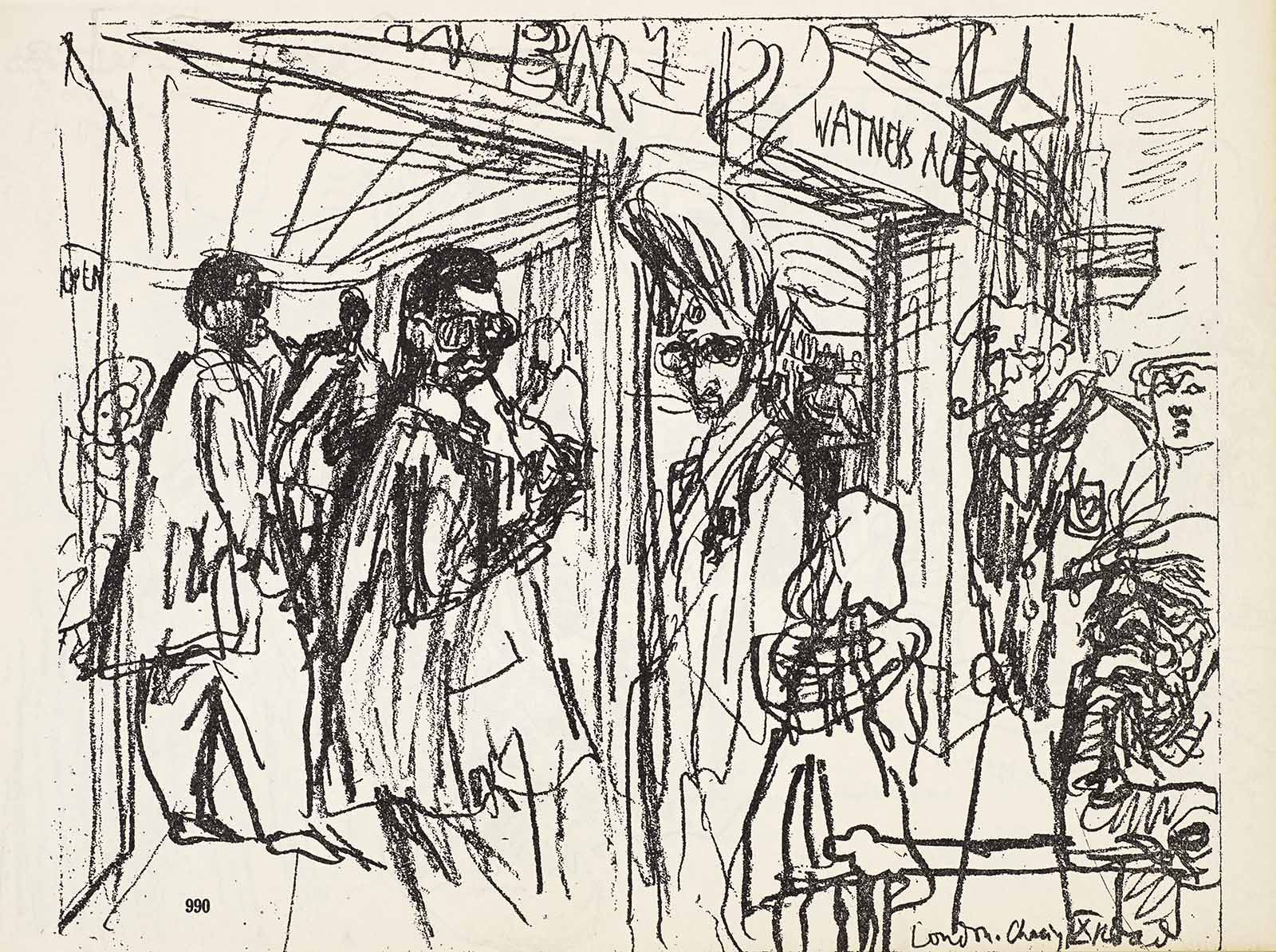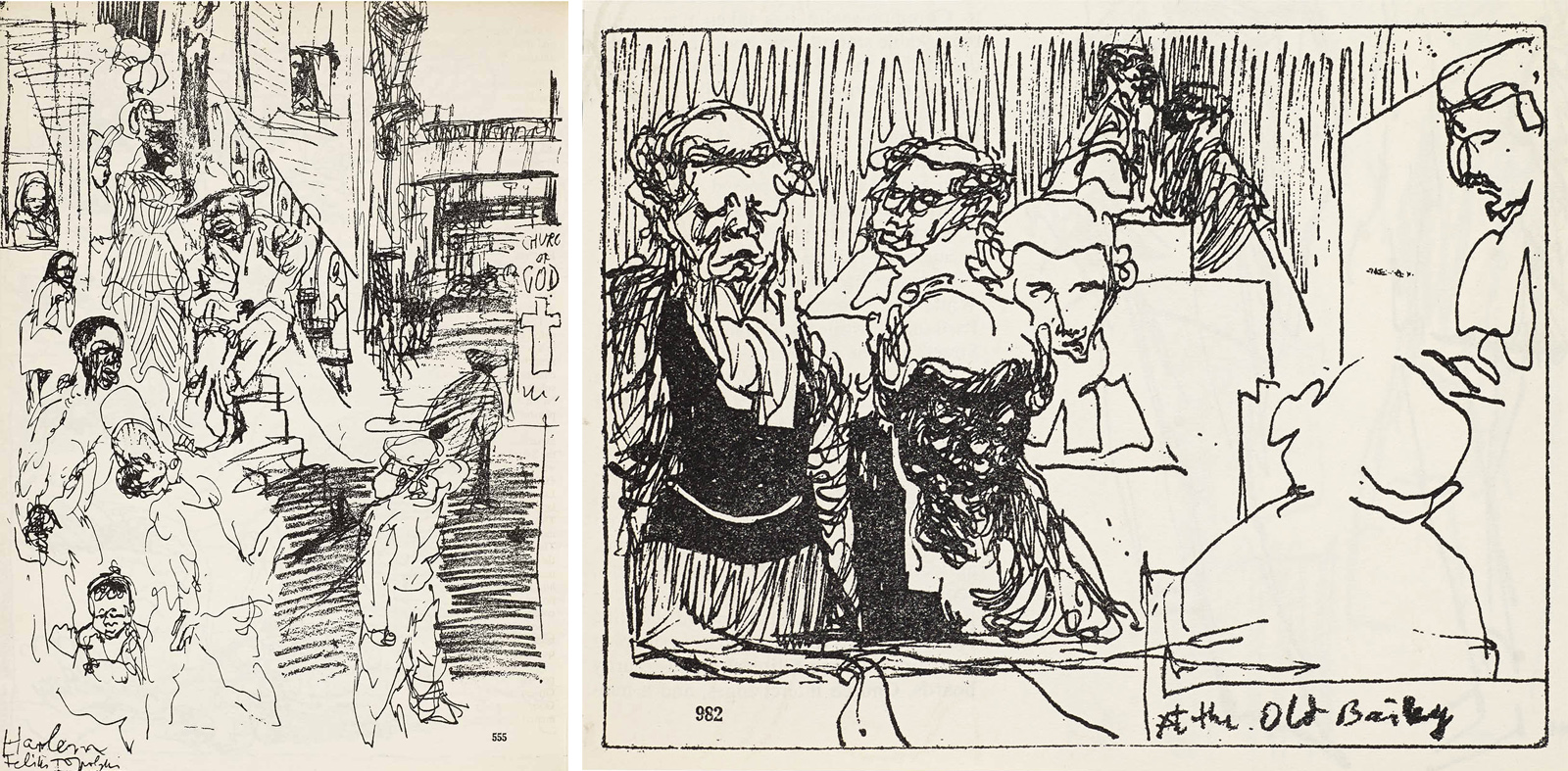April 11, 2025
By Alessandra Henriquez, interpretation intern
As an artist, nothing is more exciting to me than spending my days with art and design in the Miami community—one of my major sources of inspiration. Going into my Wolfsonian internship, I wasn't sure how contemporary art and the Wolfsonian collection could find common ground. The more I learned about the museum, the more curious I became, looking for connections between my own artistic practice and the works preserved in the museum's archives. At first, I wondered how I might apply my skills in video art, which is beyond The Wolfsonian's historical scope. However, my research led me to unearth a surprisingly relevant hidden gem.
When I first encountered Topolski's Chronicle for Students of World Affairs, I had never heard of Feliks Topolski. Born in Warsaw in 1907, Feliks Topolski spent most of his life and career in London. An accomplished painter and draughtsman, he documented everyday life and major world events through sketches and paintings, both as an official war artist and on assignment for illustrated magazines.Topolski's Chronicle provides an overview of select artworks from the artist's independent newspaper, which covered worldwide events that took place between 1953 and 1982. The images are presented alongside writings by John Roddam that add contextual details.
Details Shaped by Line
The Chronicle is a visual revelation of life through Topolski's eyes. What stands out to me most is the immediate yet striking emotive quality of his drawings. If we compare them to video, which captures a mirrored reproduction of reality, Topolski's art gives shape to an instance in time with just the curve of a line. While he placed a higher importance on large forms over detailed accuracy, Topolski did not intend to caricature his subjects. There is no artifice present in the scenes he captured. Instead, he presented people as he observed them.

Illustration, from Topolski's Chronicle for Students of World Affairs, 1958. Feliks Topolski, artist. George G. Harrap & Co., Ltd., London, publisher. The Wolfsonian–FIU, Gift of Jean S. and Frederic A. Sharf, XC2013.11.8.3.
Memory and Perception
Topolski's drawings offer a new way to preserve the past and present, making even the most banal moments of life appear interesting and energetic. Often, our memory prioritizes the big picture over the small details. Topolski's sketches work similarly, bringing focus to the elements he most remembered and letting the finer details blend into the background. For example, one illustration shows a crowd on a street outside a London bar. The figures in the foreground have much more definition, whereas the bar's interior and facade are drawn in quick strokes. Although details may seem obscured between scribbles, I feel this all the better portrays the complex ways we perceive the world around us.

Illustrations, from Topolski's Chronicle for Students of World Affairs, 1958. Feliks Topolski, artist. George G. Harrap & Co., Ltd., London, publisher. The Wolfsonian–FIU, Gift of Jean S. and Frederic A. Sharf, XC2013.11.8.3.
History in the Details
The settings pictured are quite ordinary, as the scenes are rooted in everyday experiences. I find that these fleeting moments in time are the true backbone of history, since they can reveal a lot more about daily life than meets the eye. In illustrations showing a neighborhood in Harlem, New York, and in another depicting the interior of a criminal court in London known as "the Old Bailey," clothing, hairstyles, and environment provide clues about the social, cultural, and economic dynamics of the time. The busy Harlem neighborhood, with casually dressed pedestrians of different races, displays the cultural melting pot that was New York in the 1950s. The Englishmen wearing powdered wigs and formal robes in the courtroom evoke a legal system bound to tradition—the visual representation of which conflicted with public narratives of societal shifts and modernization in the mid-20th-century British Commonwealth.
Reflecting on Topolski's life drawings reminded me of a time when I drew the banalities of my own life. For one year, I sketched figures from observation at least once a day. I like to think of every moment as a scene waiting to be captured, and at the time, that meant using my sketchbook as a visual diary. I would look for people to use as models while going about my day, then draw exactly what I saw. After analyzing this book, I'm excited to experiment and see how I can bring the immediate quality of these drawings into my video art. I am reminded of early video artists like Nam June Paik, who used portable digital equipment to record everyday moments. I wonder how I could abstract video to reflect our perception of memory in the same way as Topolski. Maybe then I can bridge the gap between analogue and digital realms.
